ADSactly History: It All Started Here!
Hello again, dear @adsactly readers!
Let me say from the very beginning I was in two minds about writing this article. It all started with something I read on a local news site - about an archaeological discovery made here, in my country, Romania. Interesting for me, but, I wondered, would anyone else want to read about it? Remnants of a 5,000 years old civilization in central Romania, is it worth writing about it? Then it hit me - yes, it is worth writing about it as it concerns so many of you out there. Even those of you reading this post in America or Australia. It is not about my ancestors, they’re your ancestors, too. This is where it all started, that old forgotten population went on to shape modern civilization.
Actually, it’s not strictly a local business. Scientists from all over Europe have gathered at the site, in central Romania, to study the artifacts discovered near the village of Boldesti Gradistea.
Five prehistoric burial sites have been uncovered so far during the digs undertaken under a project called The Yamnaya Impact on Prehistoric Europe. The Yamnaya, or Yamma culture, refers to a population that lived between 3300-2600 BC, in Eastern Europe, roughly on the territory of modern Ukraine. The Yamnaya culture is identified with late Proto-Indo-Europeans and it is the people that probably invented the Proto-Indo-European language, many of our modern languages derive from.
The term Yamnaya comes from the Russian term ‘yamma’, as they buried their dead in pits, building mounds of wood and stone above the graves. Alternatively, the Yamnaya are known as the Pit Grave culture.
The graves discovered in Romania, which is a bit West of the Ukraine, are typical of the Yamnaya culture. The dead are laid to rest on their backs, as if sleeping with their arms along their bodies. Some have red ochre sprinkled over the head and legs.
“The question of where the Yamnaya come from has been something of a mystery up to now ... we can now answer that, as we've found that their genetic make-up is a mix of Eastern European hunter-gatherers and a population from this pocket of Caucasus hunter-gatherers who weathered much of the last Ice Age in apparent isolation”.
According to experts, DNA tests have shown that modern Europeans carry some 80% genetic make-up that can be traced back to this ancient population. The Yamnaya people were tall, which explains why modern Europeans, as well as people of Caucasian origins all over the world, are taller than other population groups.
By the way, the term Caucasian, which even in the US is used to define a white person, comes from the region around the Caucasus Mountains, between the Black Sea and the Caspian Sea.
The Yamnaya were fair-skinned, with brown hair and dark eyes.
This is a facial reconstruction of what the Yamnaya people looked like:
So, many of us today carry their DNA and speak a language derived from theirs. What else?
Well, the use of horses, a big step forward for the hunter-gatherers of the past. It is thought that it was the Yamnaya brought the horse to Europe and started to use them as burden beasts as well as ride them. If you associate horses with the typical American cowboy, let’s just say that such image was made possible because thousands of years ago, the Yamnaya discovered the benefits of using horses to move around.
Our concept of family strongly resembles the social organization of the Yamnaya people, with the man being the head of the family.
One very interesting theory about the reason the Yamnaya population started migrating to Western and Northern Europe has to do with disease. In some 5000 years old burial sites, scientists have discovered plague DNA and it is believed people might have fled their homeland to escape the epidemic.
When they did leave their original lands, the Yamnaya had no trouble conquering Western Europe. Findings in Spain show the Eastern migrants wiped out the local population, sometime around 4500 BC. One of the reasons was their superior technology, including the domesticated horses, wheeled carts and better weapons.
According to David Reich, a genetics professor at Harvard University:
“The collision of these two populations was not friendly; instead, the men who arrived almost completely pushed out the local men.”
Genetic studies show that the later population carried the Y chromosome, which comes from the father, of the Yamnaya migrants. In simpler terms, that means “the men who arrived had preferential access to local women, again and again”. Basically, the Easterners came and took their women.
Evidence uncovered in tombs of the Iberian Peninsula show that the new society was a hierarchical one.
“From then on, almost all men’s tombs were filled with weaponry, adornments, displays of wealth. The archaeology reveals marked signs of a hierarchical society that broke with the old egalitarianism of the early Neolithic period.”
Modern populations of Western Europe and all the way up to modern Finland carry much of the same DNA. The conquerors that settled in the Americas were also distantly related to the Yamnaya. The Europeans that went to Australia, also.
And it all started here. As one of the experts involved in the digs in my country said:
“It’s about bones, yes, but they are a part of our European heritage, they represent our origins”.
Post authored by @ladyrebecca
References: 1, 2, 3.
Click the coin below to join our Discord Server
)
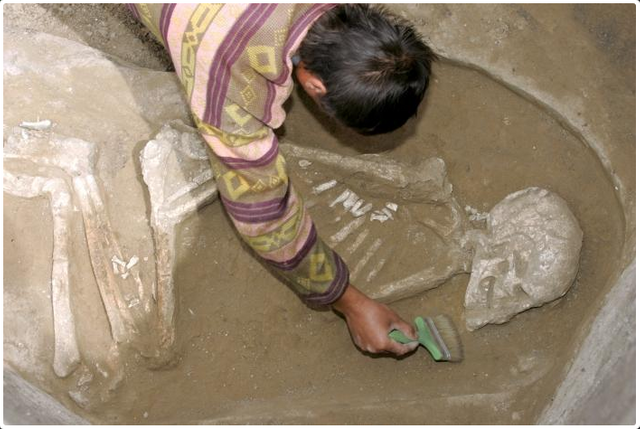
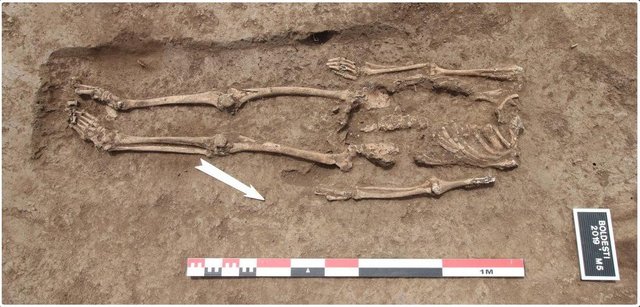
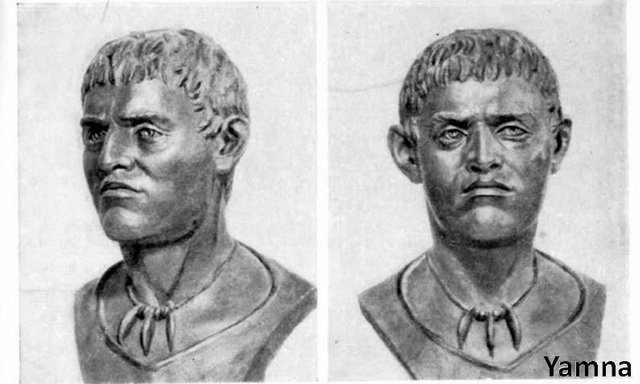
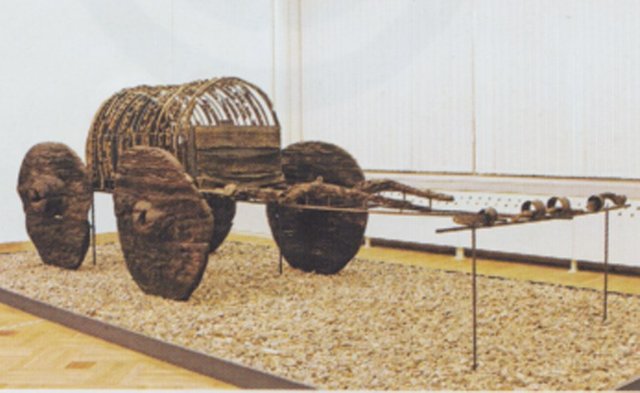
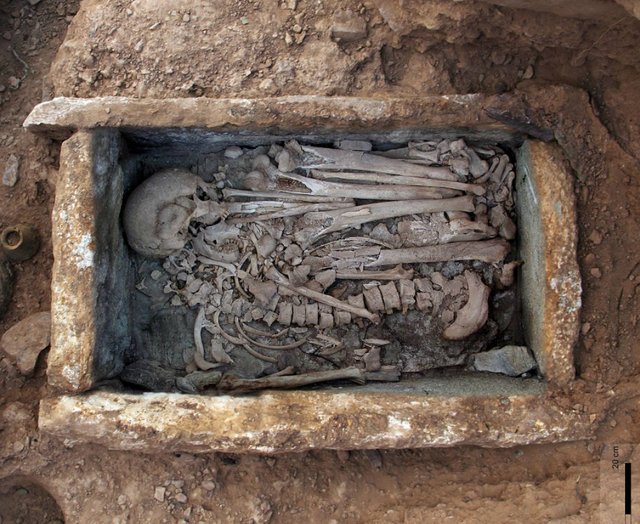
Perfect post: Interesting and illustrative, @ladyrebecca. Every day I realize that the world is a handkerchief, that we all come from the same origin and we are all one race, simply distant brothers. I have never heard of the Yamnaya and I am surprised by their direct and indirect influence on our culture and even on our genetic map. For example, I am struck by the fact that some Venezuelans have traits very similar to those you describe in your post, even though we have indigenous roots. It's always good to read you. Thank you for sharing. Greetings.
To tell you the truth I had not heard of this civilization before, either. I was aware modern European civilization began somewhere in the Eastern part of the continent, but up to now I didn't know these people had a name... I guess that's the beauty of doing these posts, finding out new stuff!
Interesting and informative post. The sad thing about the history of human civilization is the corroboration that we have always been conflict-driven. I guess that's pretty much the case with most living organism, including other animals and even plants (the competition for the goodies of the ecosystem to the point of extinguishing the competition).
I don't know why we keep conceiving the possibility of peaceful coexistence. I guess it can be achieved at some level, even if for temporary periods.
With so much scientific proof of shared origins, people should stop cultivating superiority complexes.
You're right, but I'm afraid we're very far from that!
@ladyrebecca, Whenever we talk about the Taller Humans then it reminds me of The Giants.
Posted using Partiko Android
Well, not that tall... :))
😁😁
Posted using Partiko Android
Your posts always give us valuable information, @ladyrebecca. I think I've seen something about that ancient settlers, antecedents of later humanity, in some TV station report, DW.
The Darwinian idea of the survival of the strongest is reaffirmed, and something I read in a book by researcher Pierre Clastres, Archaeology of violence: war in primitive societies.
It is very interesting that they are the ones who began to use horses as a means of transport and work. I suppose that since Asia is one of the places where the already evolved horse was given, they had easy access to this animal.
Indeed, links or almost subterranean currents interweave our origins.
Thank you for your good post. Greetings.
Hi, @adsactly!
You just got a 0.3% upvote from SteemPlus!
To get higher upvotes, earn more SteemPlus Points (SPP). On your Steemit wallet, check your SPP balance and click on "How to earn SPP?" to find out all the ways to earn.
If you're not using SteemPlus yet, please check our last posts in here to see the many ways in which SteemPlus can improve your Steem experience on Steemit and Busy.
@ladyrebecca knocks it out of the park again!
This is so full of interesting information!
I wonder if aggression is a trait that is in DNA, since you mention egalitarianism of the neolithic period. Seems the world went a bit astray when these humans went on the move 6000 years ago.